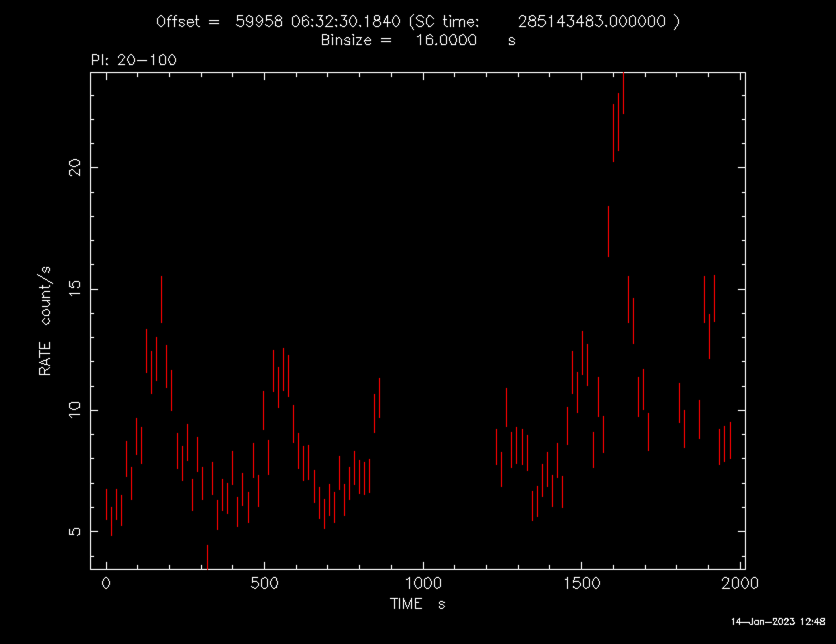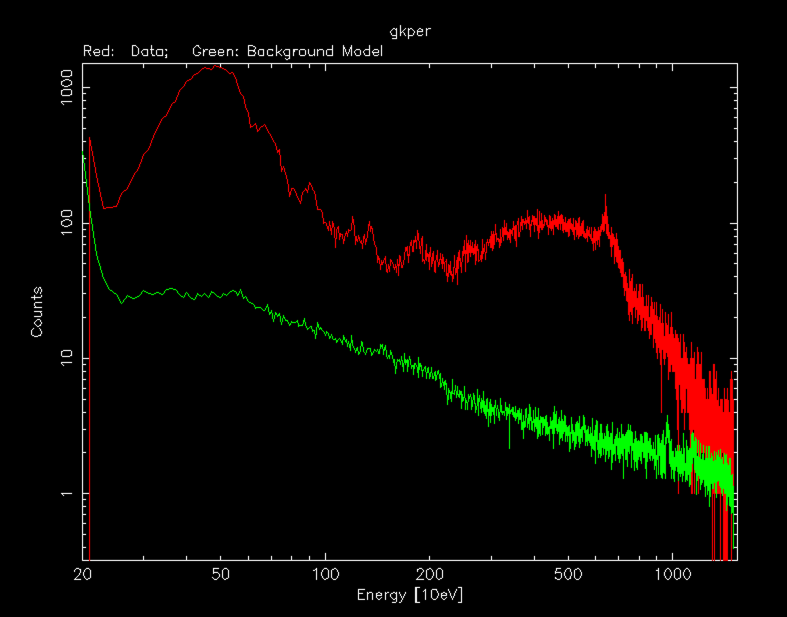NICER / ISS Science Nugget
for January 19, 2023
Watching a "Cataclysm" Unfold
White dwarfs are the collapsed remnants of stars, similar to neutron stars and stellar-mass black holes but lower in mass and much greater in number. Just like their more-massive cousins, white dwarfs often appear in binary systems with not-yet-collapsed "main sequence" stars, and their strong gravity can draw matter from the orbiting companion star in a process known as accretion. Because accretion is episodic and can result in extraordinary energy releases, such systems are generically known as "cataclysmic variables." The properties of white dwarf stars vary greatly -- among other factors, the strength of a white dwarf's magnetic field plays a key role in shaping the flow of accreting matter. The name "intermediate polar" is given to white-dwarf binaries in which a substantial magnetic field (approximately a million times stronger than Earth's field) disturbs the innermost parts of the disk of swirling gas and channels the accretion flow onto the white dwarf's magnetic poles.
On 13 January, JAXA's MAXI team reported brightening of the known intermediate polar GK Persei, which was first seen as a spectacular nova in 1901. NICER began observing GK Per within a few hours and quickly recovered many of the features seen in past outbursts by other telescopes: a 351-second pulsation arising primarily from a surface hot-spot where the accreting gas falls onto the white-dwarf surface, flares that likely repeat on timescales of several thousand seconds and are likely associated with an accretion disk, and emission in narrow photon energy ranges that are characteristic of fluorescing atoms including neon, magnesium, aluminum, silicon, and iron. By enabling such spectroscopy on timescales ranging from hundreds of seconds to the duration of the outbursts (tens of days), NICER data promises to reveal the locations and mechanisms behind the multiple processes that produce X-ray emission in this historic system.


Figure:
Left: A 2000-second NICER observation of the cataclysmic variable GK Persei immediately reveals pulsations with a period of 351 seconds, originating in the spin of the system's white dwarf star. Missing data around the 1000-sec mark is due to a real-time TDRSS telemetry gap later filled in from playback of recorded data.
Right: The X-ray spectrum of GK Persei from an accumulated NICER exposure of 8,500 seconds. The bright hump centered near 500 eV photon energy (channel 50 on the horizontal axis) is thermal emission from the white-dwarf surface, while the broad hump at energies approximately 10 times higher is emission from the accretion flow. Characteristic "line" emission is seen from several elements: neon (near 0.90 keV), magnesium (1.25 keV), aluminum (1.50 keV), silicon (1.70 keV), and iron (6.40 keV).
<< Previous
Main Index
Next >>